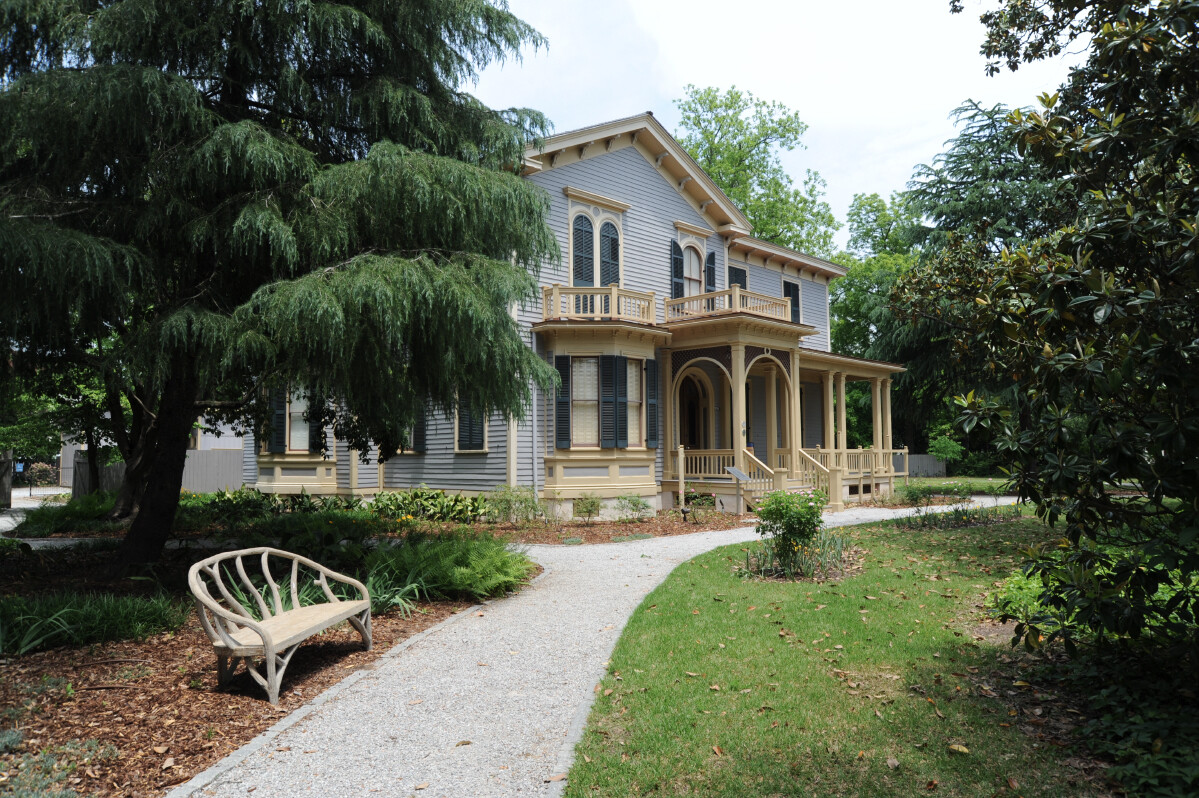
Woodrow Wilson was born in 1856 in this parsonage in Staunton, Virginia. His parents had moved into the house the year before, when his father became pastor of the First Presbyterian Church in town, and they moved away from Staunton in 1858.

Efforts to preserve the birthplace began after he died, in 1924. The Woodrow Wilson Birthplace Foundation was established, and purchased the home in 1938. In 1940 work began to restore it to its appearance in 1856, and it was dedicated officially by President Franklin Roosevelt in 1941.

The admissions desk and gift shop are located in the brick house next door, which is part of the Woodrow Wilson Presidential Library and Museum complex. The Woodrow Wilson Museum is the third house in this row.


Inside are displays about Wilson’s life in the house, and his presidency.

His Pierce-Arrow car is on view.

The basement has been converted into a World War One trench warfare display.

The Woodrow Wilson Presidential Library and Research Center is located in a fourth converted house on the block. The main repository for his papers is the manuscript library at Princeton, where he served as president of the university for nine years.

When Woodrow Wilson was two years old, his father was offered the job as pastor at a church in Augusta, Georgia, for three times his salary in Staunton, and they moved into the parsonage there. The house was bought for them, and they lived here until 1870, when he was 13 years old.

The house has been preserved as the Woodrow Wilson Boyhood Home and is open to the public, with a gift shop inside.

They moved again when his father was offered a job as a pastor and a professor at a theological seminary in Columbia, South Carolina, and they lived there until 1874.

After that, Woodrow Wilson went off to college at Princeton, then law school at the University of Virginia, and got a doctorate at Johns Hopkins. He practiced law in Atlanta, got married in Savannah, then moved to Princeton to be a professor in 1890, became president of Princeton in 1902, then governor of New Jersey, in 1910, and President of the United States for two terms, 1913-1921.

He retired at the end of his term in office, after suffering a stroke, and lived here, in a house off Embassy Row in Washington DC, in failing health, for the last three years of his life.

He died in 1924 in his bedroom upstairs, and is interred in Washington National Cathedral, just up the road.

His widow, Edith, who had first found this house for them, lived there until she died, in 1961. The National Trust for Historic Preservation took it over, and opened it to the public in 1963.
